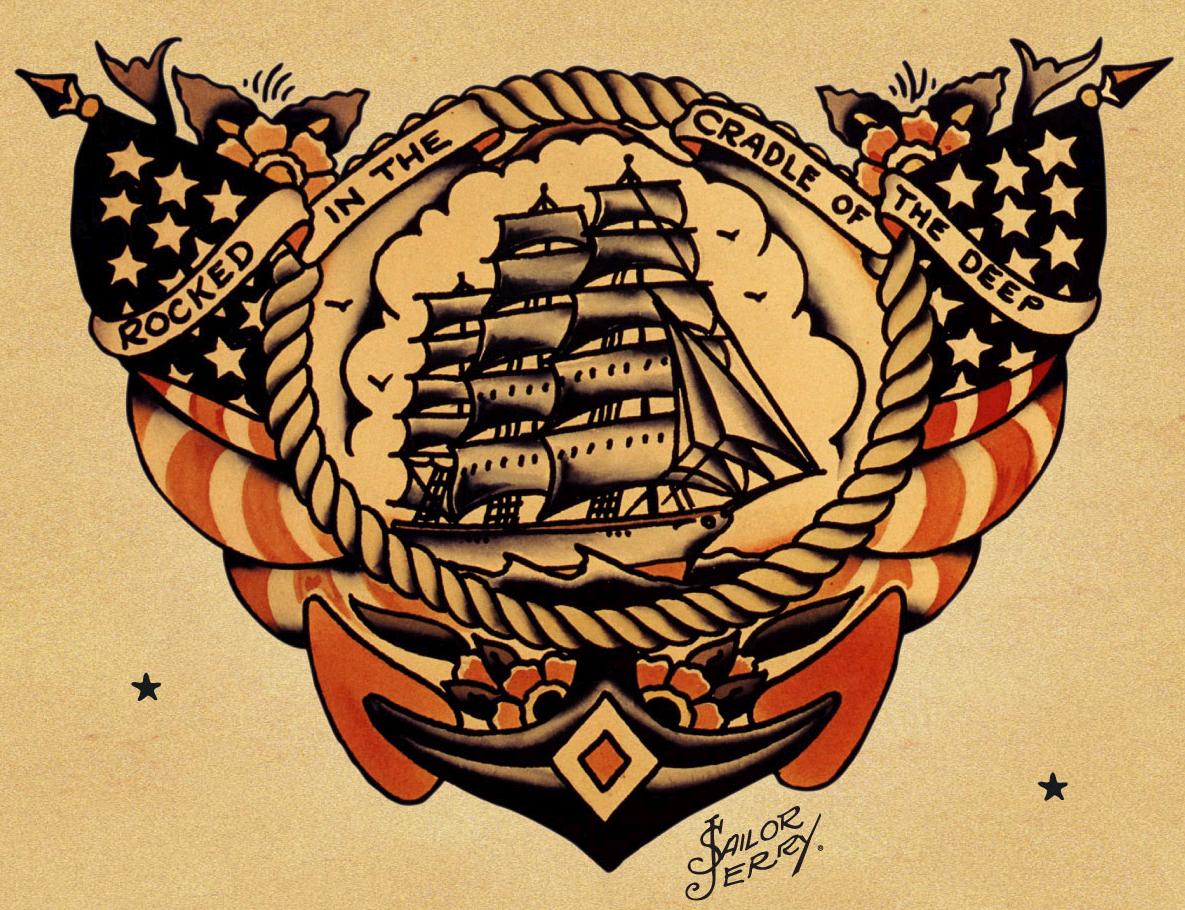Norman Keith Collins got his nickname Jerry in his childhood from the name of his father's obstinate pet donkey. He was very much fond of America more than anything else. He hated any movements which were against America.
He used to think that the Japanese were unforgivable for their misdeed of attacking the Pearl Harbor. Yet, during the Hawaiian Tattoo Convention in 1972, Collins helped the famous Japanese tattoo master Horihide, to reach the U.S.S. Arizona memorial, in his cart. It was because of his hatred, that he did not notice the high quality tattoo quality of Japanese Tattoo artists. But, surprisingly, in spite of his dislike for the Japanese, he became good friends with Horihide for many years. Being in his close association, Collin was influenced by the Japanese and Asiatic prowess.
Collins has his own style of designing various forms of tattoos. He was the first tattoo artist to use the learned Japanese tattoo art with dark background, clouds and waves merging with those of the colorful designs of western tattoos. As a result of which the tattooing became more appealing. Previously mainly black was the tattoo color. The use of bold colors and revolutionary designs created the path for the establishment of the tattooing as an art. Don Ed Hardy says: "I believe, the real breakthrough of tattooing came in the late sixties and early seventies with Sailor Jerry. He was the Cezanne of modern tattooing".
Collins spent most of his life on Hawaii. There, the contemporary tattoo artists like Don Ed Hardy and Lyle Tuttle were hard competitors of Collins. But their beliefs varied widely. To make their tattoos popular Don Ed Hardy and Lyle Tuttle carried out various publicity ventures. But Collins had always declined their attempts. According to Collins, these attention grabbing publicity ventures will only compel the laws and regulations regarding tattoos to be turned stricter. He believed that the only action that can provide publicity to the art of tattooing was the high quality of tattoo designs. Collins used to address Lyle Tuttle as "Turtle" in his letters. The aversion towards his competitors necessitated to work on the variety and quality of his tattoos and tattooing techniques.
Collins' motto was: "Good tattoos are not cheap, and cheap tattoos are not good."
Thursday, August 12, 2010
Subscribe to:
Post Comments (Atom)





No comments:
Post a Comment